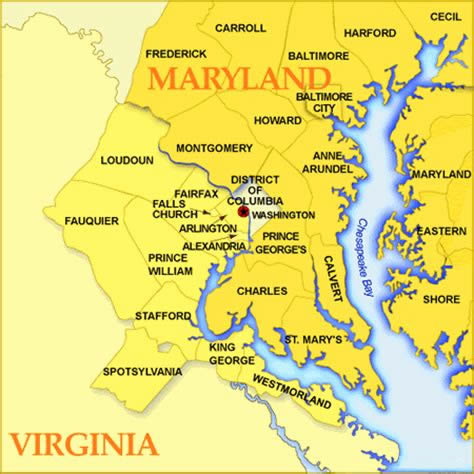Maryland was chartered in 1632 as a refuge for English Catholics, although the colony’s religious mission was ultimately undermined by internal disputes. As did neighboring Virginia, colonial Maryland maintained an economy based on tobacco and bound labor.
Since the Reformation, Roman Catholics in England had faced persecution. Wanting to provide a place where they could worship freely, George Calvert, the first Lord Baltimore, envisioned an American haven for Catholics. Baltimore was a recent convert to Catholicism and had previously invested in several colonization schemes.
In 1632, King Charles I granted Baltimore’s request and issued a charter for a colony in the upper Chesapeake. The king was sympathetic to the plight of Catholics and Maryland was named in honor of his Catholic wife, Henrietta Maria. Unlike previous charters, Maryland’s named Baltimore and his heirs “absolute Lords and Proprietors,” essentially giving the Calvert family total control over the colony.
  |
English colonists first reached Maryland in 1634, settling on the north side of the Potomac River at St. Mary’s City, the colony’s first capital. Within the first decade, settlers began erecting tobacco plantations and importing indentured servants to work them. The colonists established an elective assembly in 1638, although the governor and governor’s council were appointed by Lord Baltimore.
Economic success ensued, but religious tensions threatened the colony’s stability. Maryland had attracted both Protestants and Catholics from the start, although Baltimore gave the best lands to Catholic gentlemen and appointed Catholic governors and councilors.
In contrast, Protestants came over largely as indentured servants and were shut out of the political process. Inspired by the English Civil War, Protestant colonists seized control of the colony in 1644 in what was termed “the plundering time.”
Hoping to prevent future confrontation, Baltimore granted An Act Concerning Religion in 1649, guaranteeing that no person “professing to believe in Jesus Christ” would be “any ways troubled, molested, or discountenanced.” The first American law to ensure religious liberty, the act was intended to preserve the rights of Catholics, who had already become a minority in their own colony.
Religious strife continued nonetheless. During the Glorious Revolution of 1689, Protestants led by John Coode again seized the colony. This time, the Calverts did not regain control until 1715, when the family converted to Protestantism.
During the interim, the colonial assembly established the Anglican Church and barred Catholics from owning firearms and holding office. Thereafter religious conflicts abated as the population and economy diversified. In the late 17th century, African slaves replaced servants and became an important minority in the colony, constituting a third of Maryland’s population at the revolution.
In the northern counties, iron foundries were established and wheat farming appeared in the 1740s. Annapolis became the capital in 1694 and soon grew into a center of culture, boasting a newspaper, academy, and several clubs by the middle of the 18th century.
To the end of the colonial period, Catholics remained an important minority in Maryland. When the Maryland delegates signed the Declaration of Independence in 1776, one of the signatures belonged to Charles Carroll of Carrollton, a Catholic.
